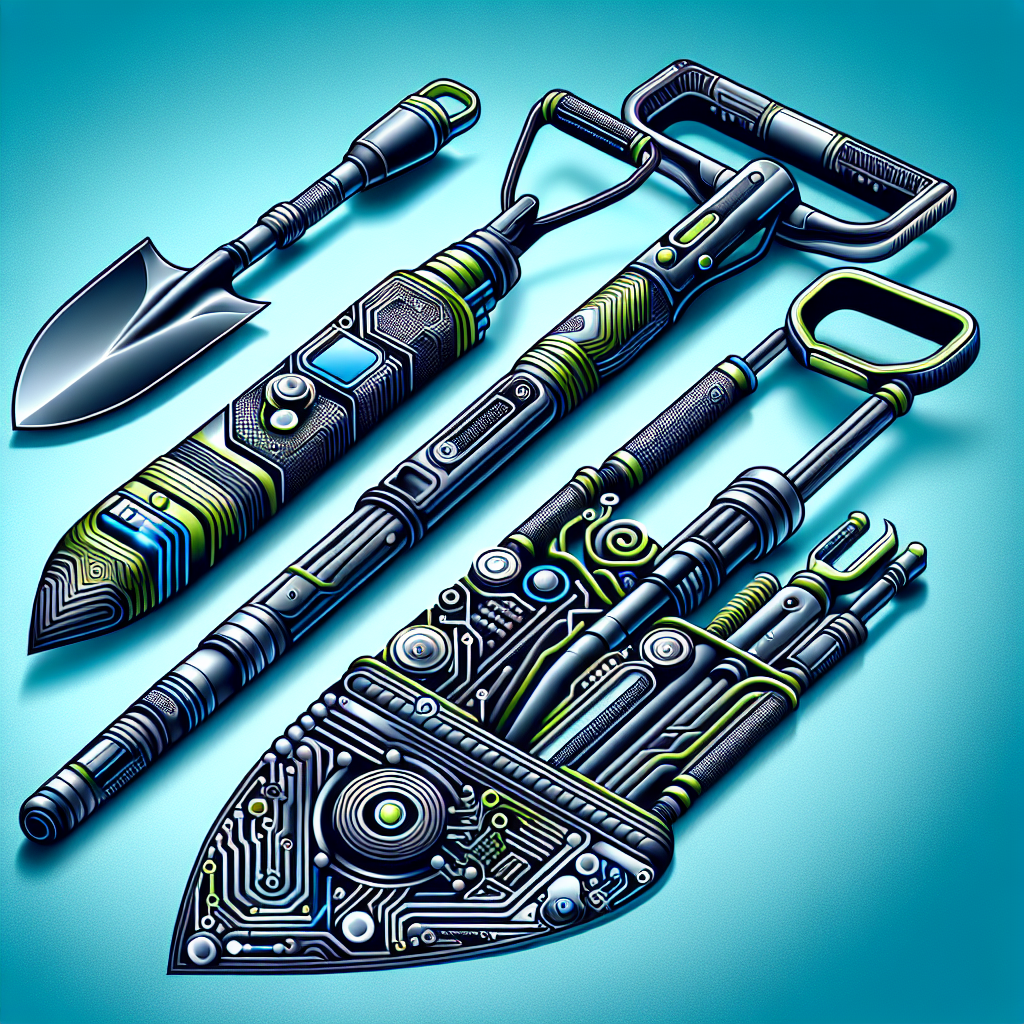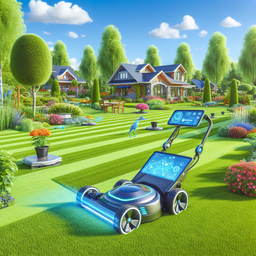Introduction
Gardening shovels are essential tools for any gardener, whether it's tending to a small backyard garden or maintaining large landscapes. They provide the necessary strength and precision required for various gardening tasks such as digging, planting, and moving soil. Choosing the right gardening shovel is crucial for efficient and comfortable gardening. This comprehensive guide explores the different types of gardening shovels, important features to consider when selecting one, the impact of blade shape on efficiency, the significance of ergonomics and comfort, maintenance and care tips, and environmental considerations.
Types of Gardening Shovels
There are several types of gardening shovels available, each designed for different tasks and soil types. Some of the common types include:
Digging Shovels: These shovels have a sharp, pointed blade ideal for digging into hard or rocky soil. They are designed to penetrate the ground with minimal effort.
Spades: Spades have a flat, rectangular blade that is ideal for straight-edging, cutting through small roots, and lifting loose soil. They are often used for transplanting and edging garden beds.
Trenching Shovels: As the name suggests, trenching shovels have a long, narrow blade that is perfect for digging deep, narrow trenches. They are commonly used for installing irrigation systems and laying drainage pipes.
Each type of gardening shovel has specific features and uses, and understanding these differences can help gardeners select the appropriate tool for their specific needs.
Important Features to Consider
When choosing a gardening shovel, it is important to consider certain key features that can greatly impact its performance and longevity. Industry experts provide recommendations on the following features:
Handle Material: The handle material should be strong, durable, and resistant to rotting. Most gardening shovels feature handles made of wood, fiberglass, or steel. Wooden handles are comfortable and resilient but require regular maintenance to prevent rotting. Fiberglass handles are lightweight and resistant to weathering, making them a popular choice. Steel handles are extremely durable but may be heavier than other materials.
Blade Shape: The shape of the blade determines the shovel's functionality. A pointed blade is ideal for digging into hard soil, while a flat blade is more suited for cutting roots and slices through soil efficiently. Professionals recommend selecting a shovel with a blade shape that matches the intended gardening tasks.
Durability: A gardening shovel should be built to last. Look for shovels made from high-quality materials that can withstand the rigors of gardening. Reinforcements, such as steel collars or rivets, can enhance the shovel's durability and longevity.
Considering these features can help gardeners make an informed decision when purchasing a gardening shovel that best suits their needs.
Case Study: The Impact of Blade Shape on Efficiency
To understand the impact of blade shape on efficiency, a research study was conducted comparing the performance of different blade shapes during digging tasks. The study analyzed three common blade shapes: pointed, flat, and concave.
The researchers measured the time taken and effort exerted by experienced gardeners while digging into different types of soil. The results indicated that the pointed blade shape was the most efficient for penetrating hard or compacted soil. The flat blade shape, on the other hand, performed exceptionally well in cutting through roots and slicing through the soil. The concave blade shape proved effective in moving loose soil efficiently.
Based on the study's findings, it is evident that the choice of blade shape should be aligned with the specific gardening tasks at hand, maximizing both efficiency and effectiveness.
Ergonomics and Comfort
Ergonomics is a critical aspect to consider when choosing a gardening shovel. It ensures that the tool is comfortable to use, reducing strain and fatigue on the gardener's body. To ensure a comfortable gardening experience, consider the following tips:
Handle Design: Look for a shovel with an ergonomic handle design that fits comfortably in your hand. It should provide a secure grip and minimize strain on the wrist and arm.
Weight Distribution: A shovel with proper weight distribution can significantly reduce the strain on your back and shoulders. Opt for a well-balanced shovel that distributes the weight evenly.
Adjustable Length: Some shovels come with adjustable handles, allowing the gardener to customize the shovel's length based on their height and preferred working position. This feature can enhance comfort and reduce the risk of injury.
By prioritizing ergonomics and comfort, gardeners can enjoy longer and more productive gardening sessions with minimal strain on their bodies.
Maintenance and Care
Proper maintenance and care are essential to ensure gardening shovels remain effective and durable over time. The following tips can help extend the lifespan of a gardening shovel:
Cleaning: After each use, it is important to remove any dirt or debris from the shovel. Use a stiff brush or pressure washer to clean the blade and handle thoroughly.
Sharpening: Regularly sharpening the blade can greatly improve its efficiency. Use a sharpening stone or file to maintain a sharp edge.
Lubrication: Applying a thin layer of lubricant such as oil or grease to the metal parts of the shovel can prevent rust and corrosion.
Storage: Store gardening shovels in a dry location to prevent moisture damage. Hanging them on a wall or storing them in a shed or garage can help protect them from the elements.
By following these maintenance practices, gardeners can ensure their shovels stay in optimal condition for years to come.
Environmental Considerations
As environmental awareness continues to grow, it is important to consider the impact of gardening shovels on the environment. Experts recommend the following environmental considerations:
Sustainable Materials: Look for shovels made from sustainable materials such as bamboo or recycled plastic. These materials are more environmentally friendly and help reduce the carbon footprint.
Avoiding Chemical Treatments: Some shovels may be treated with chemicals for added durability or protection. Opt for untreated shovels to minimize the release of harmful chemicals into the soil.
Proper Disposal: When a gardening shovel reaches the end of its lifespan, it is crucial to dispose of it responsibly. Check local recycling programs for options to recycle metal or plastic components.
By selecting environmentally conscious gardening shovels and practicing responsible disposal, gardeners can make a positive impact on the environment while pursuing their gardening endeavors.
Conclusion
Choosing the right gardening shovel is essential for efficient and comfortable gardening. By understanding the different types of gardening shovels, important features to consider, and the impact of blade shape, gardeners can make informed decisions when purchasing a shovel. Additionally, prioritizing ergonomics, maintaining the shovel properly, and considering environmental implications can further enhance the gardening experience. Remember to select a shovel that suits your specific needs, and always prioritize efficiency, comfort, and sustainability.
Call to Action
We encourage you to share your experiences, insights, and recommendations in the comments section below. Join the conversation and learn from fellow gardeners. For further research and learning about gardening shovels, refer to the following resources:
- The Complete Gardening Shovel Guide by Gardening Times Magazine.
- Best Practices for Choosing and Using Garden Shovels by Gardening Association.
- Sustainable Gardening Tools: Shovels for a Greener Future by Green Gardener's Journal.
Happy gardening!
Topics




